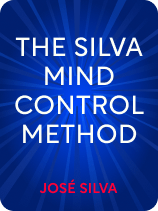

This article is an excerpt from the Shortform book guide to "The Silva Mind Control Method" by José Silva. Shortform has the world's best summaries and analyses of books you should be reading.
Like this article? Sign up for a free trial here.
How does visualization create positivity in your life? What are good visualization techniques for manifestation?
According to The Silva Mind Control Method by José Silva, you can use visualization to create real, positive developments in your life. Silva acknowledges that this technique isn’t foolproof, but it does work sometimes, and the more you practice, the more effective it becomes.
Let’s look at how to use visualization to master manifestation.
Manifesting in the Alpha State
To effectively use any visualization technique for manifestation, you must meet three conditions. First, you must want the result to happen. Second, you must believe that the result is possible—Silva warns that you cannot manifest something you genuinely believe to be impossible. Third, you must genuinely believe that the result will happen (this differs from merely wanting it to happen).
(Shortform note: In Think and Grow Rich, Napoleon Hill echoes Silva’s three conditions for effectively manifesting positive outcomes in your life. While Silva implies that it’s enough to merely meet the conditions, Hill argues that to see results, you must pursue these conditions passionately. It’s not enough to merely want the result to happen—it must be your all-consuming desire. Similarly, you can’t just believe the event will happen—you must have unwavering faith that it will. Finally, Hill goes a step beyond believing something will happen and argues that you must act as though it already happened.)
Silva adds a caveat—manifesting in the Alpha state is not an omnipotent power. Specifically, you’ll never be able to manifest something that directly harms someone else. In Silva’s experience, the nature of the Alpha state simply will not allow you to do harm—if you try, that harm is likely to befall you instead.
(Shortform note: In The Secret, Byrne explains why trying to manifest harm for someone else will ultimately only harm you. Byrne argues that the universe picks up on the vibrational frequency of our thoughts and tunes our experiences to that same frequency. However, if you focus your thoughts on bringing negativity into someone else’s life, the universe only picks up on the negative vibrations—not the target of them. Then, it sends experiences of that same frequency back to you—meaning your negative thoughts only bring harm to yourself, not others.)
How to Manifest Effectively
There are four steps to manifesting effectively in Silva’s method:
1) First, go into your Alpha state. On your mental screen, picture in detail the problem you’d like to address. For example, maybe you’re searching for a new home but haven’t found any suitable options in your price range. To visualize this, you might picture all the unsuitable homes you’ve seen, or home listings outside your budget.
2) Next, slide the image to the right until it moves off your screen. (The direction is important; in the Alpha state, the brain processes time from left to right. So when you push negative events to the right, you’re telling your brain that that event is in the past now.)
(Shortform note: Silva’s argument that the brain processes time from left to right may not be universal. In The Design of Everyday Things, Don Norman explains that culture determines how we represent time. For example, people in Western cultures tend to think of time as a road stretching out before them, with the future ahead of them and the past behind them. However, people in some other cultures represent the timeline horizontally. Norman notes that cultures that think of the past on the right (as Silva does) tend to have languages that are read from right to left (such as Arabic).)
3) Then, picture a new scene in which the problem is beginning to resolve and progress is being made. For example, you might picture your computer screen populating with a list of homes for sale that meet all your needs and are within your budget.
4) Finally, move the previous scene off the screen (again, to the right) and replace it with a scene in which the problem has been fully resolved. Picture this in as much detail as you can summon. Pay attention to how it makes you feel. For example, picture yourself in your brand new home—you might imagine how the light filters through the windows, the creak of the hardwood floors, and the sense of accomplishment you feel for having finally found the right house.
| Static Versus Dynamic Visualization In The Secret, Byrne adds an additional consideration for your visualization practice: movement. She argues that it’s easier to connect emotionally to a moving image than a static image, and the more you connect to the image emotionally, the more likely the universe is to pick up on the signal you’re sending out and make that image a reality. You can use this principle in multiple places in Silva’s visualization technique. In step one, when you picture your current problem, picture it as a static image—this way, the universe won’t get confused and continue creating the problem in your life. In step three, when you picture the problem beginning to resolve, add a bit of motion; for example, you might picture yourself scrolling through the list of homes on your computer. Finally, in step four, when you picture the problem completely resolved, make the image as dynamic as possible. Picture yourself walking through your new home, climbing the stairs, and exploring each new room. |

———End of Preview———
Like what you just read? Read the rest of the world's best book summary and analysis of José Silva's "The Silva Mind Control Method" at Shortform.
Here's what you'll find in our full The Silva Mind Control Method summary:
- The method of using your mind to heal your body, sharpen memory, and solve problems
- How to unlock your innate psychic power to help yourself and others
- How you can use the Alpha state to heal others remotely






